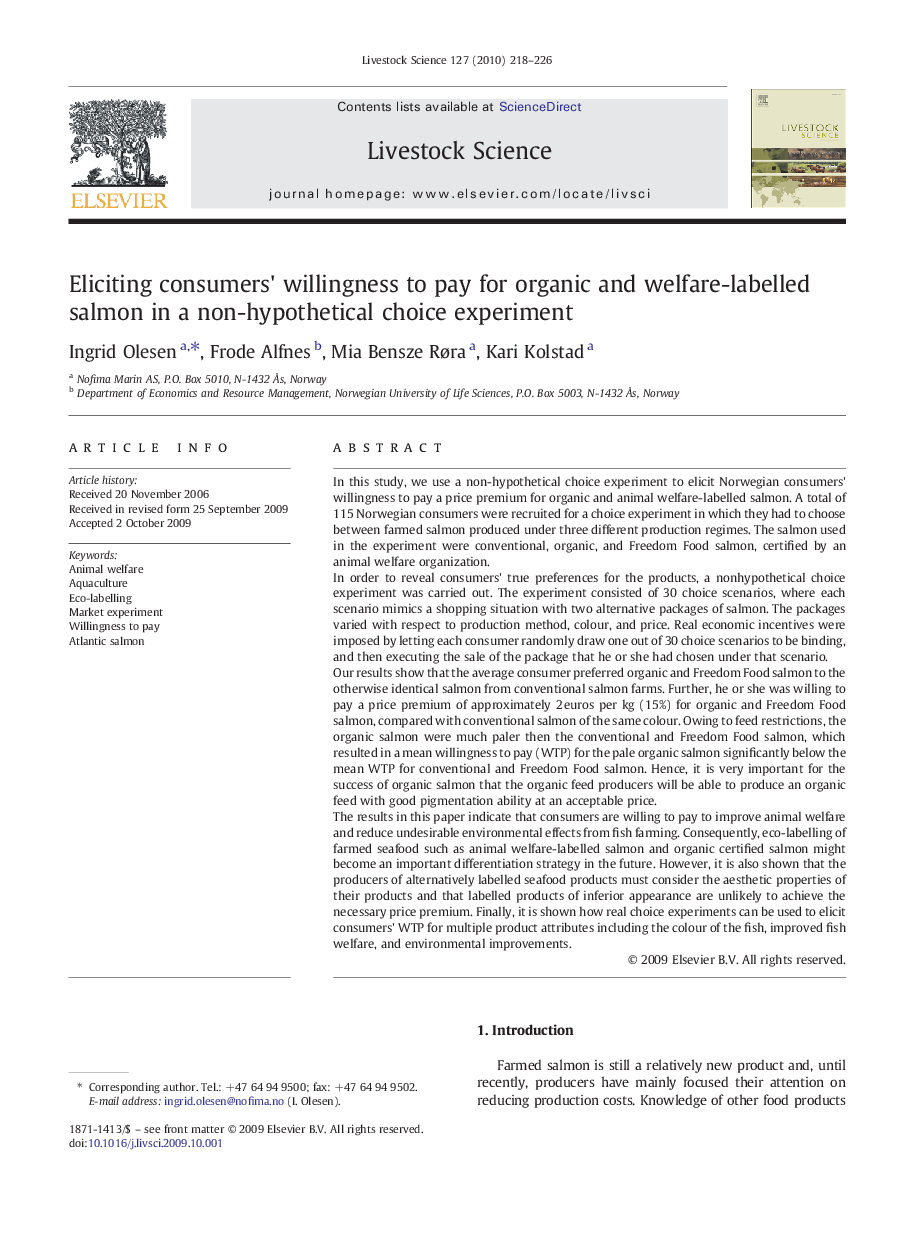| کد مقاله | کد نشریه | سال انتشار | مقاله انگلیسی | نسخه تمام متن |
|---|---|---|---|---|
| 2448095 | 1554005 | 2010 | 9 صفحه PDF | دانلود رایگان |

In this study, we use a non-hypothetical choice experiment to elicit Norwegian consumers' willingness to pay a price premium for organic and animal welfare-labelled salmon. A total of 115 Norwegian consumers were recruited for a choice experiment in which they had to choose between farmed salmon produced under three different production regimes. The salmon used in the experiment were conventional, organic, and Freedom Food salmon, certified by an animal welfare organization.In order to reveal consumers' true preferences for the products, a nonhypothetical choice experiment was carried out. The experiment consisted of 30 choice scenarios, where each scenario mimics a shopping situation with two alternative packages of salmon. The packages varied with respect to production method, colour, and price. Real economic incentives were imposed by letting each consumer randomly draw one out of 30 choice scenarios to be binding, and then executing the sale of the package that he or she had chosen under that scenario.Our results show that the average consumer preferred organic and Freedom Food salmon to the otherwise identical salmon from conventional salmon farms. Further, he or she was willing to pay a price premium of approximately 2 euros per kg (15%) for organic and Freedom Food salmon, compared with conventional salmon of the same colour. Owing to feed restrictions, the organic salmon were much paler then the conventional and Freedom Food salmon, which resulted in a mean willingness to pay (WTP) for the pale organic salmon significantly below the mean WTP for conventional and Freedom Food salmon. Hence, it is very important for the success of organic salmon that the organic feed producers will be able to produce an organic feed with good pigmentation ability at an acceptable price.The results in this paper indicate that consumers are willing to pay to improve animal welfare and reduce undesirable environmental effects from fish farming. Consequently, eco-labelling of farmed seafood such as animal welfare-labelled salmon and organic certified salmon might become an important differentiation strategy in the future. However, it is also shown that the producers of alternatively labelled seafood products must consider the aesthetic properties of their products and that labelled products of inferior appearance are unlikely to achieve the necessary price premium. Finally, it is shown how real choice experiments can be used to elicit consumers' WTP for multiple product attributes including the colour of the fish, improved fish welfare, and environmental improvements.
Journal: Livestock Science - Volume 127, Issues 2–3, February 2010, Pages 218–226